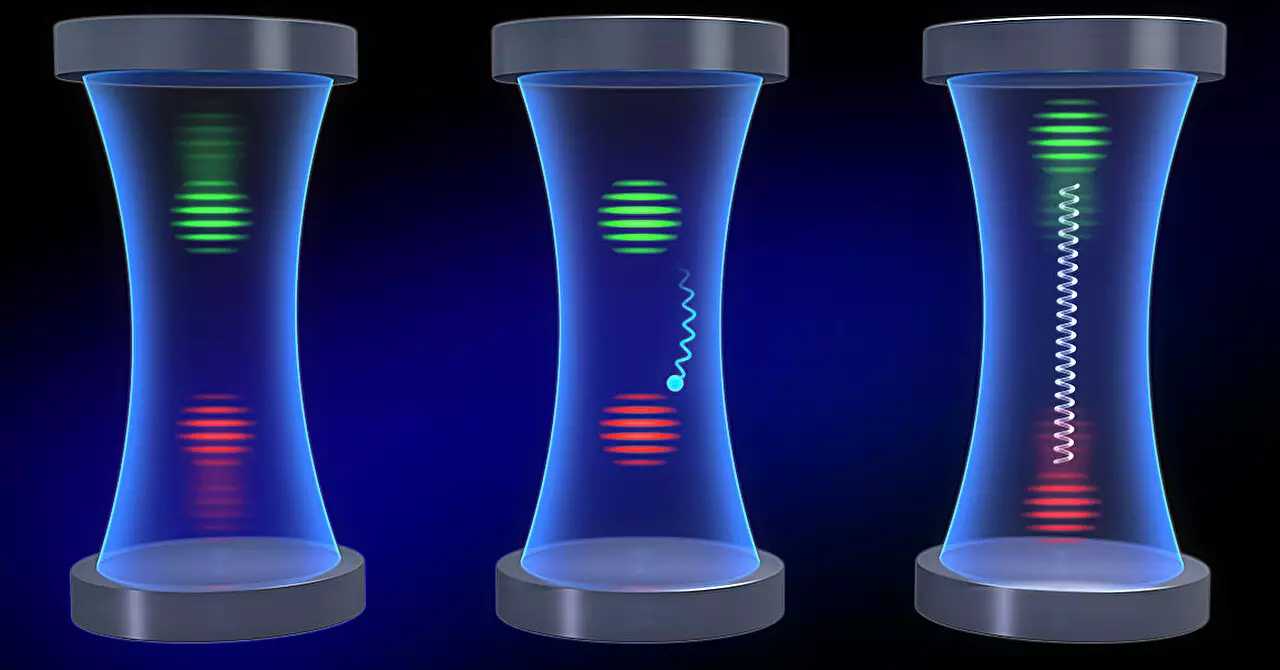Atom measurement has long been a challenge for physicists due to the concept of atomic recoil. The recoil occurs when an atom interacts with a photon, causing the atom to move in the opposite direction, making it challenging to accurately measure its position and momentum. This phenomenon has significant implications for quantum sensing, which aims to detect small changes in parameters for various applications, such as studying gravitational waves and dark matter.
Overcoming Atomic Recoil
In a recent study published in Science, researchers from JILA and NIST introduced a groundbreaking approach to combat atomic recoil. By leveraging a new atomic interaction called momentum-exchange interaction, atoms were able to exchange momentums by swapping corresponding photons. This exchange took place within a cavity, an enclosed space made of mirrors, which enabled the researchers to observe a dampening effect on atomic recoil through the collective absorption of energy states within the confined environment.
The researchers’ innovative method opens up new possibilities for designing cavities to reduce recoil and external interferences in a wide range of experiments. This advancement can lead to a deeper understanding of complex systems and facilitate the exploration of new facets of quantum physics. Additionally, the improved cavity design could enhance simulations of phenomena like the Bose-Einstein-Condensate-Bardeen-Cooper-Schrift crossover and high-energy physical systems.
One of the key findings of the study was the observation of one-axis twisting (OAT) dynamics induced by the momentum-exchange interaction. OAT is a fundamental aspect of quantum entanglement that enables the entanglement of atomic momentum states. This discovery represents a significant step forward in demonstrating entanglement beyond internal atomic states and could help reduce quantum noise in multi-atom systems.
By enforcing the exchange of photons and associated energies between atoms, the researchers were able to exert better control over atomic recoil. Through this process, akin to a game of dodgeball, atoms could neutralize the recoil by exchanging photons with each other. This exchange created a density grating, visualized as a fine-toothed comb pattern, indicating coherence between the two momentum states involved.
The researchers’ novel approach also tackled the issue of Doppler shift, a phenomenon that affects precision spectroscopy by altering the frequency of absorbed photons due to atomic recoil. Through simulations, the researchers demonstrated that their method could mitigate measurement errors caused by Doppler shift, offering a more accurate way to conduct spectroscopic analysis.
The momentum exchange between atoms not only aided in recoil control but also served as a form of quantum entanglement. By creating a feedback mechanism within a cavity, the atoms exhibited correlated motion, indicating a strong connection between their momentum states. This discovery sheds light on the potential applications of this entanglement in improving quantum devices.
Moving forward, the researchers plan to delve deeper into this newfound form of quantum entanglement to uncover its full potential in enhancing various quantum technologies. By continuing to explore the interplay between momentum states and atomic interactions, the researchers aim to unlock new opportunities for advancing quantum research and applications.


Leave a Reply